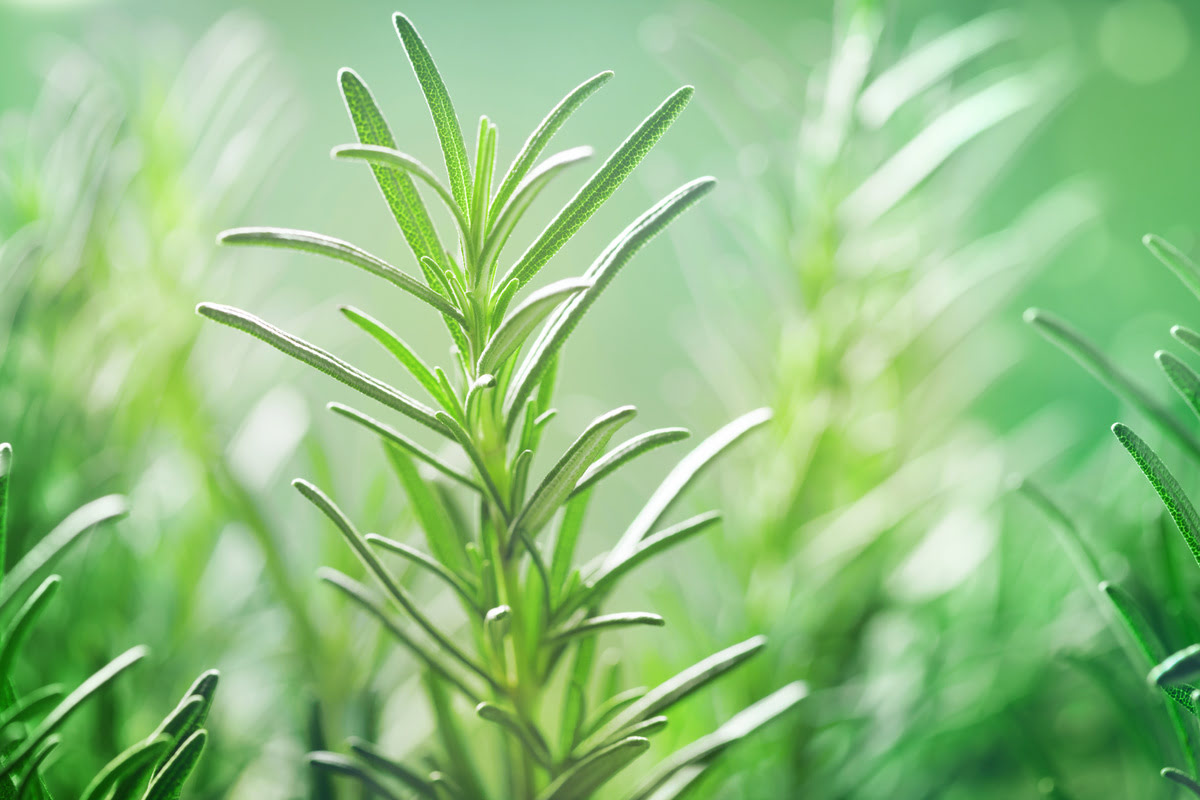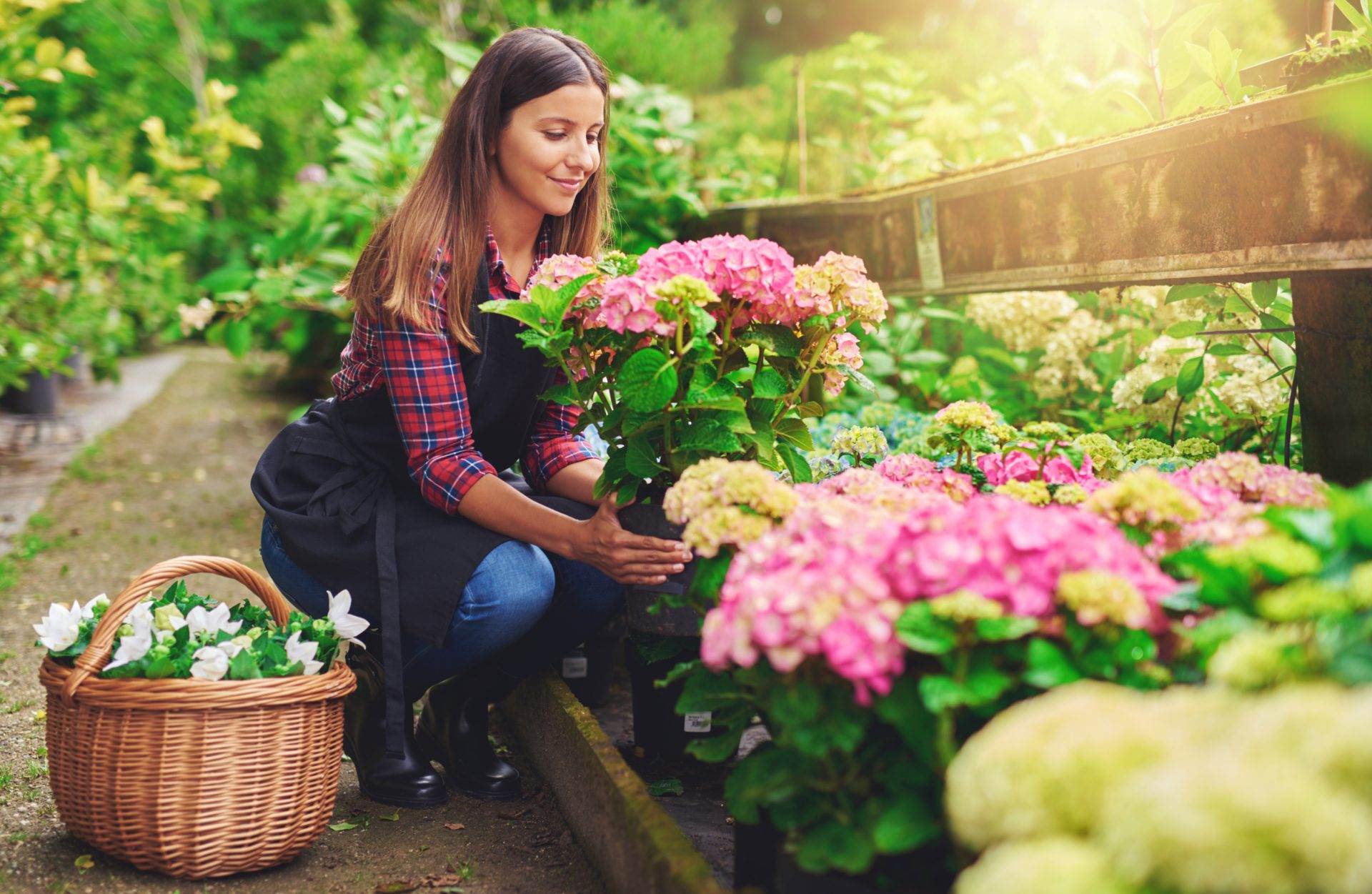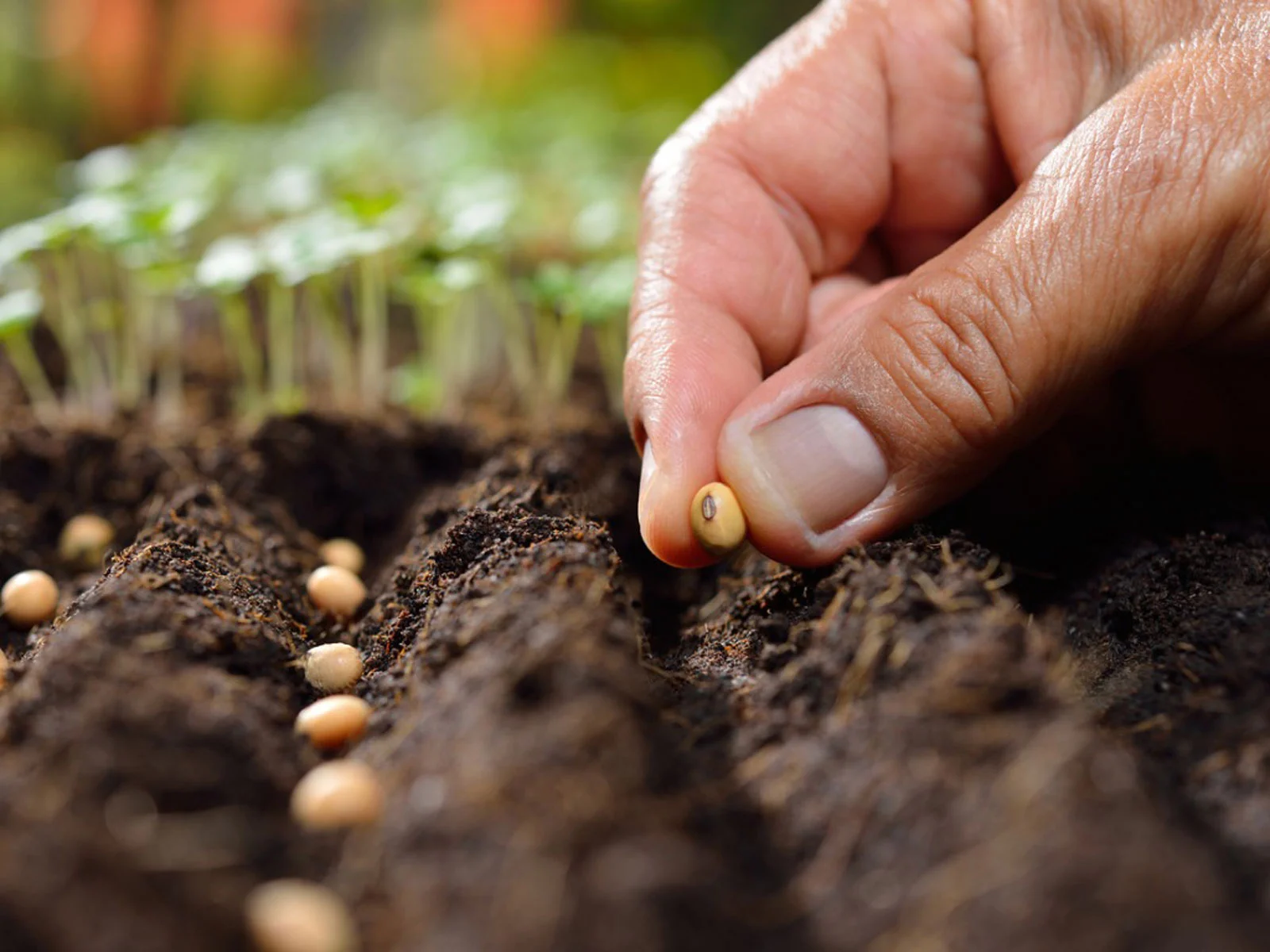Home>Types of Gardening>Edible Gardening>How Do You Harvest Rosemary Without Killing The Plant


Edible Gardening
How Do You Harvest Rosemary Without Killing The Plant
Published: January 29, 2024
Learn how to harvest rosemary for your edible garden without harming the plant. Discover the best techniques for sustainable harvesting and promoting plant growth.
(Many of the links in this article redirect to a specific reviewed product. Your purchase of these products through affiliate links helps to generate commission for Chicagolandgardening.com, at no extra cost. Learn more)
Table of Contents
**
Introduction
**
When it comes to growing herbs, rosemary is a beloved favorite among gardeners and culinary enthusiasts alike. This fragrant, woody herb not only adds a delightful flavor to various dishes but also offers a myriad of health benefits. However, harvesting rosemary can be a delicate process, and it's important to understand the best practices to ensure the plant's continued health and vitality.
In this article, we will delve into the art of harvesting rosemary without causing harm to the plant. From understanding the nature of rosemary to exploring the best techniques for harvesting and caring for this herb, we will provide you with a comprehensive guide to help you make the most of your rosemary harvest. Whether you are a seasoned gardener or just starting out, this article will equip you with the knowledge and skills to harvest rosemary effectively and sustainably.
Join us as we embark on a journey to discover the secrets of harvesting rosemary, unlocking the full potential of this versatile herb while nurturing the plant for future growth and abundance. Let's explore the world of rosemary together, learning how to harvest it with care and respect for its natural beauty and resilience.
Understanding Rosemary
Before delving into the art of harvesting rosemary, it’s essential to develop a deeper understanding of this aromatic herb. Rosemary, scientifically known as Rosmarinus officinalis, is a perennial herb with a rich history dating back to ancient civilizations. Native to the Mediterranean region, this herb is revered for its culinary, medicinal, and ornamental properties.
Characterized by its needle-like leaves and woody stems, rosemary is known for its distinct fragrance and robust flavor. It thrives in well-drained soil and prefers ample sunlight, making it a popular choice for gardens, containers, and landscapes. Beyond its culinary uses, rosemary offers a range of health benefits, including its potential to improve digestion, boost cognitive function, and provide antioxidant support.
One of the key attributes of rosemary is its resilience and ability to withstand various growing conditions. This herb is known for its drought tolerance and adaptability, making it a low-maintenance addition to any garden. Additionally, rosemary is a perennial plant, meaning it can continue to grow and thrive for several years under the right care.
Understanding the growth habits and natural tendencies of rosemary is crucial when it comes to harvesting. By gaining insight into the plant’s lifecycle, seasonal patterns, and preferred growing environment, you can make informed decisions when it’s time to harvest this versatile herb. With this knowledge as our foundation, we can now explore the best practices for harvesting rosemary, ensuring that we honor the plant’s resilience and vitality throughout the process.
Best Practices for Harvesting Rosemary
Harvesting rosemary is a rewarding endeavor that allows you to enjoy the fresh, aromatic flavors of this versatile herb. However, to ensure the plant’s continued growth and productivity, it’s crucial to follow best practices when harvesting rosemary. By adopting mindful and sustainable harvesting techniques, you can maintain the health of the plant while maximizing your yield of fragrant rosemary sprigs.
First and foremost, it’s important to wait until the rosemary plant is mature enough for harvesting. Typically, it’s best to wait until the plant is at least one year old before initiating the first harvest. This allows the plant to establish a strong root system and develop the essential oils and flavors that make rosemary so prized in culinary applications.
When selecting sprigs for harvest, opt for the tender, new growth located at the tips of the stems. These young shoots contain the highest concentration of essential oils, resulting in superior flavor and aroma. By harvesting selectively and leaving the older growth intact, you encourage the plant to continue producing fresh growth, ensuring a sustainable harvest for the future.
Another important consideration when harvesting rosemary is the timing of the harvest. It’s ideal to harvest rosemary in the morning when the aromatic oils are at their peak concentration. This not only enhances the flavor and fragrance of the harvested sprigs but also minimizes stress on the plant, as it allows time for the wounds to heal before nighttime.
Furthermore, utilizing sharp, clean pruning shears or scissors is essential for a precise and gentle harvest. Clean cuts promote faster healing for the plant, reducing the risk of disease and promoting vigorous regrowth. When harvesting, aim to cut the stems just above a set of leaves, as this encourages branching and new growth, contributing to a bushier and more productive rosemary plant.
By adhering to these best practices for harvesting rosemary, you can ensure a bountiful harvest while nurturing the long-term health and vitality of your rosemary plant. With a mindful approach to harvesting, you can savor the flavors of fresh rosemary while fostering a thriving and sustainable garden ecosystem.
Techniques for Harvesting Rosemary
Harvesting rosemary involves employing specific techniques to ensure a successful and sustainable yield while preserving the health of the plant. By utilizing the right methods, you can optimize the harvest of this aromatic herb and promote vigorous regrowth for future harvests.
One effective technique for harvesting rosemary is selective pruning. Rather than indiscriminately removing large sections of the plant, selectively prune the stems, focusing on the tender, new growth at the tips. This approach allows the older growth to remain intact, promoting continuous production of fresh sprigs while maintaining the plant’s overall structure and vitality.
When harvesting rosemary, it’s crucial to make clean, precise cuts to minimize damage to the plant. Using sharp pruning shears or scissors, snip the stems just above a set of leaves, ensuring that the remaining plant can swiftly heal and initiate new growth. Avoid tearing or crushing the stems, as this can lead to unnecessary stress and potential damage to the plant.
Another effective technique for harvesting rosemary is to stagger the harvest throughout the growing season. Rather than harvesting all the sprigs at once, selectively harvest small quantities of rosemary as needed. This approach not only allows the plant to maintain its overall vigor but also ensures a steady supply of fresh rosemary for culinary use.
For those who wish to preserve their harvested rosemary, air-drying is a popular technique that retains the herb’s flavor and aroma. To air-dry rosemary, bundle several sprigs together and hang them upside down in a well-ventilated area away from direct sunlight. Once the sprigs are completely dry, remove the leaves from the stems and store them in an airtight container for future use.
By employing these techniques for harvesting rosemary, you can enjoy a continuous supply of fresh, flavorful herbs while nurturing the long-term health and productivity of your rosemary plant. With a mindful and strategic approach to harvesting, you can savor the essence of rosemary while fostering a thriving garden ecosystem.
Caring for Rosemary After Harvesting
After the exhilarating process of harvesting rosemary, it’s essential to provide post-harvest care to ensure the plant’s continued health and vitality. By implementing proper care practices, you can support the regrowth and resilience of the rosemary plant, setting the stage for future harvests and sustained productivity.
One crucial aspect of post-harvest care for rosemary is to address any wounds or cuts on the plant. After harvesting, it’s important to monitor the cut stems and ensure they are healing properly. Providing an optimal growing environment, including adequate sunlight, well-drained soil, and appropriate moisture levels, can aid in the healing process and promote vigorous regrowth.
Additionally, consider applying a gentle, organic fertilizer after harvesting to support the plant’s recovery and encourage new growth. A balanced, slow-release fertilizer formulated for herbs can provide essential nutrients without overwhelming the plant, contributing to its overall strength and resilience.
Pruning the rosemary plant after harvest is another important aspect of post-harvest care. By removing any dead or woody growth and shaping the plant to maintain its desired form, you can stimulate fresh growth and ensure a robust, productive plant for future harvests.
When caring for rosemary after harvesting, it’s crucial to monitor the plant for signs of stress or disease. Keep an eye out for yellowing leaves, wilting, or unusual discoloration, as these may indicate underlying issues that require attention. Addressing any potential issues promptly can prevent them from escalating and impacting the overall health of the plant.
Finally, maintaining a consistent watering routine and ensuring proper drainage are essential components of post-harvest care for rosemary. While rosemary is known for its drought tolerance, it still requires adequate moisture, especially during the recovery period after harvesting. Striking a balance between allowing the soil to dry out slightly between waterings and providing sufficient hydration is key to supporting the plant’s post-harvest recuperation.
By implementing these post-harvest care practices, you can nurture the resilience and vitality of your rosemary plant, setting the stage for continued growth and abundant harvests. With mindful care and attention, you can enjoy the enduring beauty and utility of this beloved herb in your garden for years to come.
Conclusion
As we conclude our exploration of harvesting and caring for rosemary, it’s evident that this aromatic herb holds a special place in the hearts of gardeners and culinary enthusiasts. By understanding the nature of rosemary and adopting best practices for harvesting, we can savor the flavors and fragrances of this versatile herb while nurturing its long-term health and productivity.
Rosemary, with its resilient nature and rich history, offers a wealth of culinary, medicinal, and ornamental benefits. Through selective pruning, mindful harvesting techniques, and strategic post-harvest care, we can ensure that the rosemary plant continues to thrive and delight us with its bountiful harvests year after year.
Harvesting rosemary is not merely a task but a celebration of nature’s abundance and the art of sustainable gardening. By approaching the harvest with care and reverence for the plant, we honor the intrinsic beauty and resilience of rosemary, fostering a harmonious relationship with this beloved herb.
As you embark on your journey of harvesting and caring for rosemary, remember to embrace the process with patience and mindfulness. Whether you’re snipping fresh sprigs for a culinary masterpiece or preserving the herb for future use, each harvest is an opportunity to connect with the natural world and savor the fruits of your labor.
May your rosemary harvests be abundant, your plants be vibrant, and your culinary creations be infused with the timeless essence of this remarkable herb. With each harvest, you contribute to the enduring legacy of rosemary, nurturing its presence in gardens and kitchens around the world.
As we bid farewell to this exploration of rosemary harvesting and care, let us carry forward the wisdom and appreciation gained, cherishing the art of sustainable harvests and the enduring beauty of this beloved herb.




